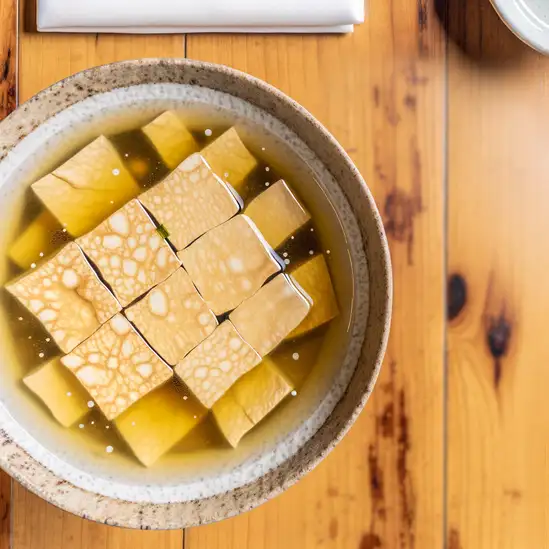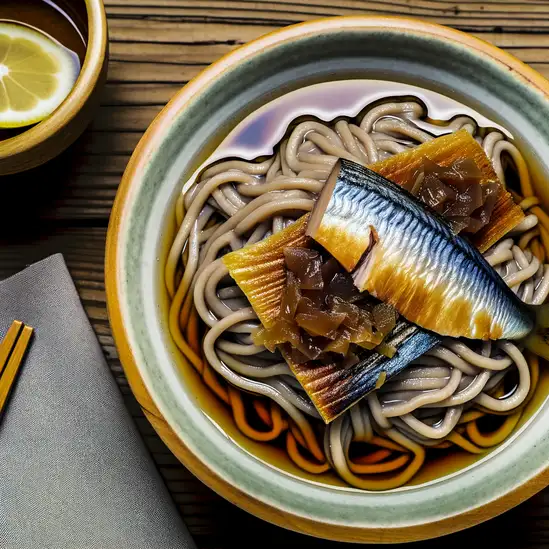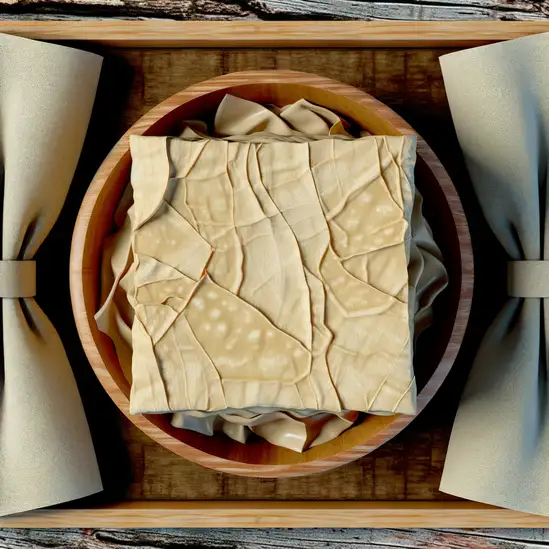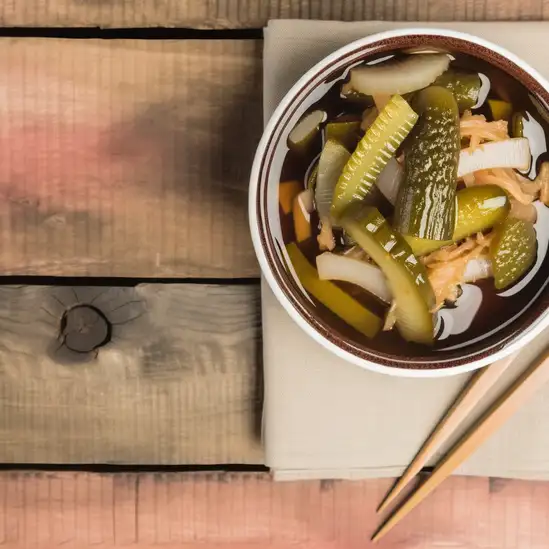



If you find yourself wandering through Kamigyō-ku,it’s like stepping into a quieter,more intimate chapter of Kyoto’s story. The air carries a gentle mix of incense from ancient temples and the subtle sweetness of fresh matcha from nearby tea shops. As you stroll along narrow streets lined with traditional wooden houses,you’ll hear the soft clatter of geta sandals on stone paths and the occasional murmur of monks chanting in the distance. It’s a place where time feels a little slower,inviting you to soak in the calm and history that lingers in every corner. What makes Kamigyō-ku truly special is its blend of old and new. You can visit the serene Kitano Tenmangū Shrine,where plum blossoms perfume the air in early spring,then wander over to charming local markets where vendors offer delicate Kyoto sweets and handcrafted ceramics. The neighborhood pulses with a quiet pride in its cultural roots,from the artisans who keep traditional crafts alive to the small cafes serving up perfectly brewed green tea alongside seasonal wagashi. There’s a warmth here that’s hard to put into words—like the feeling of sitting down for a slow meal with friends,sharing stories and laughter. Kamigyō-ku isn’t about flashy sights or crowds; it’s about savoring moments,discovering subtle beauty,and feeling connected to a living history that’s both humble and profound. If you want to experience Kyoto’s soul beyond the usual spots,this is where you’ll find it.
The information on this page is currently being reviewed by Tripkliq and should be used as a guide only
Eng word: Hello
Eng pronunciation: Konnichiwa
Local language: こんにちは
Eng word: Goodbye
Eng pronunciation: Sayōnara
Local language: さようなら
Eng word: Thank you
Eng pronunciation: Arigatō
Local language: ありがとう
Eng word: How much
Eng pronunciation: Ikura
Local language: いくら
Eng word: Toilet
Eng pronunciation: Toire
Local language: トイレ
Eng word: Help me
Eng pronunciation: Tasukete
Local language: 助けて
Eng word: Yes
Eng pronunciation: Hai
Local language: はい
Eng word: No
Eng pronunciation: Iie
Local language: いいえ
Eng word: Excuse me
Eng pronunciation: Sumimasen
Local language: すみません
Kamigyō-ku, located in Kyoto, Japan, is one of the eleven wards in the city. It was officially established in 1879 when the city of Kyoto was reorganized under the new local government system.
The Kyoto Imperial Palace, once the residence of Japan's Imperial Family, is situated in Kamigyō-ku. The palace, showcasing classical Japanese architecture, has been a significant site through history, symbolizing the cultural and political heart of Japan.
Daitoku-ji, a key temple of the Rinzai school of Zen Buddhism, located in Kamigyō-ku, was founded in the early 14th Century. It is renowned for its beautiful Zen gardens and as a center of Japanese tea culture.
Situated in Kamigyō-ku, the Nishijin Textile Center is a modern facility where visitors can learn about and observe the traditional Nishijin weaving process, crucial to Kyoto's cultural heritage. Nishijin is known for producing some of the finest textiles in Japan.
Dedicated to Abe no Seimei, a legendary onmyōji (a practitioner of Japanese esoteric cosmology), Seimei Shrine was built in 1007. It features the iconic Seimei star and is a popular spot for both locals and tourists fascinated by Japanese folklore.
Kamigyō-ku is dotted with beautifully preserved machiya (traditional wooden townhouses), offering a glimpse into the lifestyle and architecture of historic Kyoto. These structures contribute significantly to the area's charming atmosphere.
Imamiya Shrine, famous for its annual Yasurai Festival, is a peaceful haven located in Kamigyō-ku. Founded in 994 to protect Kyoto from epidemics, the shrine has been a place of prayer for health and wellbeing for centuries.
Kitano Tenmangū, founded in the 10th century in honor of Sugawara no Michizane, a scholar, poet, and politician, is renowned for its spectacular plum blossom gardens. The shrine is especially crowded during the plum blossom season and the Tenjin-san Market.
Established in 1924, the Kyoto Botanical Gardens in Kamigyō-ku are the oldest and most comprehensive public botanical gardens in Japan, boasting over 12,000 species of plants. It offers a lush escape and educational experience for visitors.
In Kamigyō-ku, the most common Power Adaptor is Type A, Type B.



A simple yet elegant dish made with soft tofu simmered in a light broth, often served with dipping sauces and garnished with green onions.

Buckwheat noodles served in a hot broth, topped with sweetened herring, a dish that combines savory and sweet flavors.

Tofu skin that is delicately prepared and often served fresh or in various dishes, highlighting the rich flavors of Kyoto's soy products.

A variety of pickled vegetables that are served as side dishes, providing a crunchy and tangy contrast to the main courses.

A traditional multi-course meal that showcases seasonal ingredients and meticulous presentation, reflecting the culinary artistry of Kyoto.
Imagine stepping into a city that buzzes with an infectious energy,where neon lights splash vibrant colors across the night sky and the air hums with laughter and chatter. That’s Osaka for you—a place that feels alive in the most welcoming way. It’s not just a city; it’s a warm,spirited friend who invites you to dive into its lively streets,where every corner tells a story. The scent of sizzling takoyaki and okonomiyaki wafts through the air,tempting you to stop and savor the rich,comforting flavors that define Osaka’s food culture.
Walking through Dotonbori,you’ll hear the rhythmic clatter of chefs flipping pancakes on hot griddles,mixed with the playful calls of street vendors. The city’s character shines in its blend of old and new—ancient castles stand proudly near bustling shopping arcades,and traditional theaters share space with quirky,modern cafes. People here are famously friendly and down-to-earth,always ready with a smile or a helpful tip,making you feel instantly at home.
What makes Osaka truly special is its unapologetic joyfulness. It’s a city that celebrates life through its food,festivals,and everyday moments. Whether you’re savoring a bowl of rich ramen,exploring vibrant markets,or simply soaking in the neon-lit riverbanks,Osaka wraps you in a warm embrace that lingers long after you leave. Trust me,once you experience its spirited charm,you’ll find yourself dreaming of coming back.
Hiroshima has this incredible mix of quiet reflection and vibrant life that stays with you long after you leave. When you walk through the city,there’s a gentle hum of everyday moments—people chatting over steaming bowls of okonomiyaki,the city’s famous savory pancake,or the soft rustle of leaves in Shukkeien Garden. The air carries a subtle blend of sea breeze and fresh greenery,grounding you in a place that’s both peaceful and full of stories.
What really sets Hiroshima apart is its spirit. The Peace Memorial Park is deeply moving,but it’s not just about history—it’s about hope and resilience. You can feel the city’s heartbeat in the way locals honor the past while embracing the future. Nearby,the bustling Hondori shopping street buzzes with energy,where neon signs flicker and laughter spills from cozy cafes and lively izakayas.
Don’t miss the chance to take a ferry to Miyajima Island,where the iconic floating torii gate seems to float on the water at high tide. The island’s serene forests and friendly deer add a magical touch to your visit. Hiroshima’s warmth isn’t just in its sights but in its people—their kindness and quiet strength make you feel like you’re part of something meaningful. It’s a city that invites you to slow down,listen,and soak in a unique blend of history,culture,and everyday beauty.
If you wander into Kobe,you’ll immediately notice a unique blend of old-world charm and modern energy humming through the air. The city sits gracefully between the shimmering waters of the harbor and the lush,rolling Rokko Mountains,giving it this incredible sense of openness and calm. As you stroll along the waterfront,the salty breeze carries the faint scent of fresh seafood mingled with the rich aroma of sizzling Kobe beef grilling nearby—trust me,the taste lives up to the hype. The streets buzz softly with a mix of locals chatting in cozy cafes and the occasional clatter of trams,creating a rhythm that feels both lively and laid-back.
Kobe’s character is shaped by its history as a port city open to the world,which means you’ll find a fascinating cultural mix here. From the European-style architecture in Kitano to the vibrant Chinatown where lanterns glow warmly at night,every corner tells a story. The city’s art scene is quietly thriving too,with galleries and street art popping up in unexpected places,inviting you to pause and explore.
What I love most is how Kobe balances sophistication with warmth. Whether you’re savoring a cup of hand-drip coffee in a tucked-away café or hiking up to a viewpoint to watch the city lights twinkle below,there’s a gentle invitation to slow down and soak it all in. It’s a place that feels welcoming,like a friend who’s excited to share their favorite spots and stories with you.
If you ever find yourself craving a place where the ocean breeze carries a hint of tropical warmth and the streets hum with a laid-back island rhythm,Naha Shi in Okinawa is where you want to be. Walking through its bustling markets,you’ll catch the vibrant colors of fresh fruits and the spicy aroma of Okinawan cuisine wafting through the air—think sweet purple sweet potatoes and tangy goya stir-fries that tease your taste buds. The city feels alive but never rushed,like it’s inviting you to slow down and savor every moment.
Naha’s charm lies in its blend of old and new. You can wander through the historic Shuri Castle grounds,where the echoes of Ryukyu Kingdom royalty still seem to linger,then stroll just a few blocks to modern cafes and quirky shops that pulse with youthful energy. The locals are warm and welcoming,often eager to share stories or recommend their favorite spots for a refreshing sata andagi (Okinawan doughnut) or a cup of jasmine tea.
As the sun dips low,the harbor lights twinkle against the backdrop of turquoise waters,and the gentle sound of waves mingles with distant laughter from street performers. It’s a city that feels like a gentle embrace—rich in culture,alive with flavor,and wrapped in the kind of peaceful energy that makes you want to stay a little longer,just to soak it all in.
If you find yourself wandering through Fukuoka-shi,you’ll immediately notice a refreshing blend of vibrant city life and laid-back coastal charm. The air carries a subtle saltiness from the nearby sea,mingling with the enticing aroma of street food stalls sizzling with fresh yakitori and steaming bowls of Hakata ramen. It’s a city that hums with energy but never feels overwhelming—like a close-knit community that’s just big enough to surprise you at every corner.
Walking through the bustling Nakasu district at night,neon lights flicker against the river’s calm surface,while laughter and chatter spill out from cozy izakayas. The city’s pulse is warm and inviting,with locals who are proud yet unpretentious,always ready to share a story or recommend their favorite spot. Fukuoka’s rich history peeks through in its temples and shrines,but it’s the modern art galleries and lively festivals that show how the city embraces both tradition and innovation.
What really sets Fukuoka apart is its pace—fast enough to keep you intrigued,slow enough to savor. Imagine sitting by the waterfront,a gentle breeze brushing your face,as you sip on a cold yuzu drink and watch fishing boats bobbing gently. It’s a place where you can dive into Japan’s culinary delights,explore vibrant markets,and still find quiet moments to just breathe and soak it all in. Trust me,Fukuoka feels like a warm welcome you didn’t know you needed.
If you ever find yourself in Japan during winter,Sapporo-shi is a city that wraps you in a cozy,spirited embrace unlike anywhere else. Imagine crisp,snowy streets lined with softly glowing lanterns,the air tinged with the scent of pine and sizzling street food. The city hums with a lively yet laid-back energy—locals chatting over steaming bowls of miso ramen or clinking glasses of rich,locally brewed beer. It’s a place where modern city life meets nature’s quiet beauty,all under a sky that often blushes pink at sunset.
Walking through Odori Park,you’ll hear the crunch of fresh snow beneath your boots and catch glimpses of intricate ice sculptures shimmering in the cold air,especially during the famous Snow Festival. The architecture is a charming mix of clean,contemporary lines and historic European influences,giving the city a unique personality that feels both familiar and refreshingly new. Cafés spill warm light onto the streets,inviting you in to savor Hokkaido’s creamy dairy treats or a perfectly brewed cup of coffee.
What really makes Sapporo special is its genuine warmth—people here are friendly without being overbearing,proud of their city’s rich culture and natural bounty. Whether you’re wandering through the bustling Nijo Market tasting fresh seafood or hiking nearby trails that open up to breathtaking views,Sapporo feels like a place that invites you to slow down,breathe deeply,and savor every moment.
Scammers may dress up as geishas and charge tourists high fees for photos, even though they are not authentic geishas.
Some shops near tourist attractions may charge significantly higher prices for souvenirs compared to other areas.
Some restaurants may add unexpected cover charges or service fees to the bill, especially in tourist-heavy areas.
Scammers may lure tourists into bars or clubs with promises of cheap drinks, only to present an inflated bill at the end.
Some taxi drivers may take longer routes or charge extra fees to tourists unfamiliar with the area.
Tourists may be invited to participate in a 'traditional tea ceremony' that turns out to be overpriced and inauthentic.
Individuals may pose as tour guides and offer overpriced or low-quality tours with little historical or cultural value.
Japan has very strict drug laws, and this includes Kamigyō-ku. The possession, use, or trafficking of illegal drugs is severely punished, with potential penalties including long prison sentences and heavy fines. Even some medications that are legal in other countries may be restricted or require special permission in Japan. Tourists should ensure they are not carrying any prohibited substances and should consult with Japanese authorities if they have any questions about specific medications.
In Kamigyō-ku, as in the rest of Japan, smoking is generally prohibited in many public places, including restaurants, bars, and public transportation. There are designated smoking areas where smoking is allowed. Violating these rules can result in fines. It is important to look for signs indicating smoking areas and to be mindful of local regulations.
Vaping is subject to similar regulations as smoking in Kamigyō-ku. It is generally prohibited in public places and allowed only in designated areas. Tourists should be aware of and respect these designated vaping areas to avoid fines and ensure compliance with local laws.
What are other people saying about Kamigyō-ku?
Recent Social posts about Kamigyō-ku
There is nothing to show you for now.